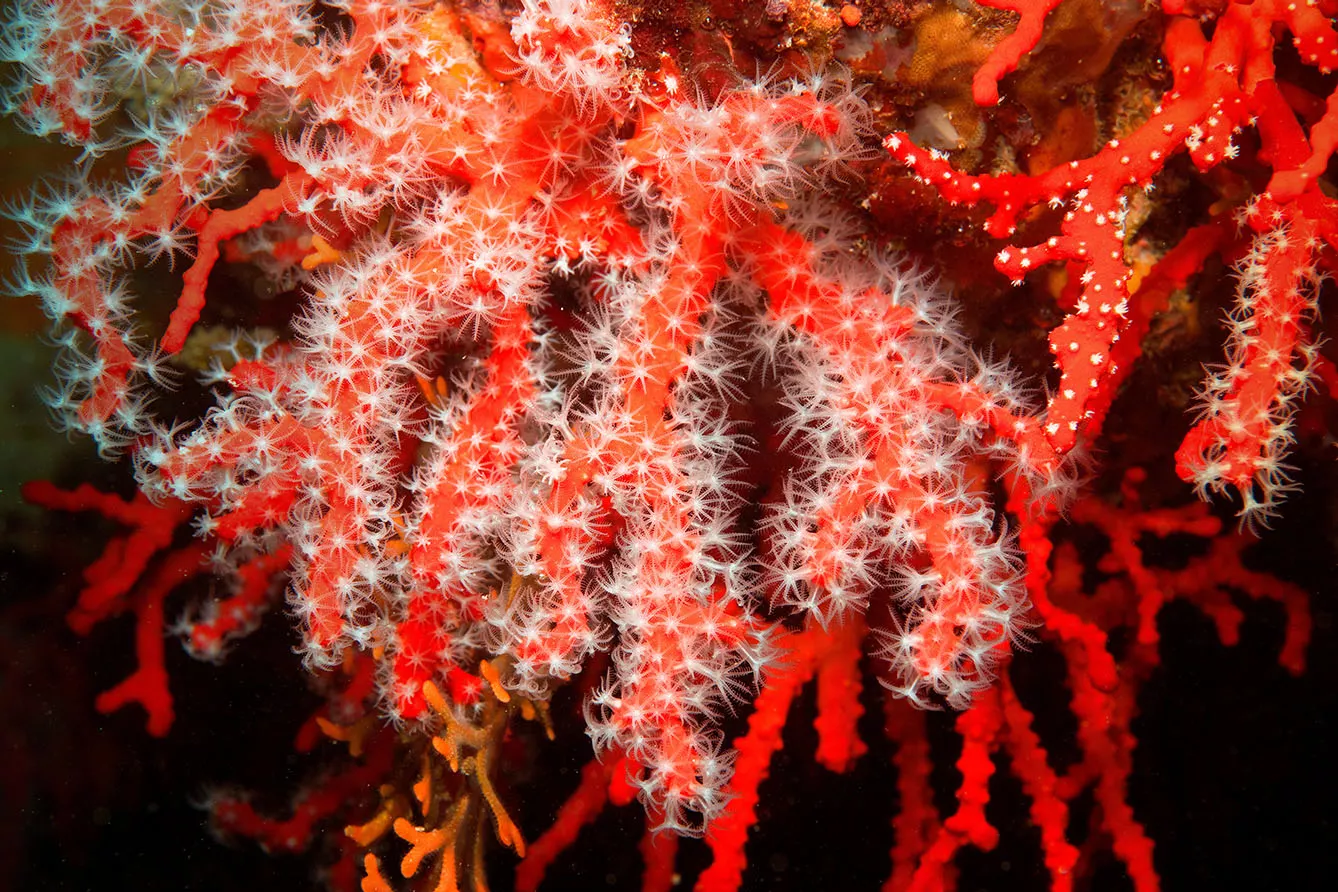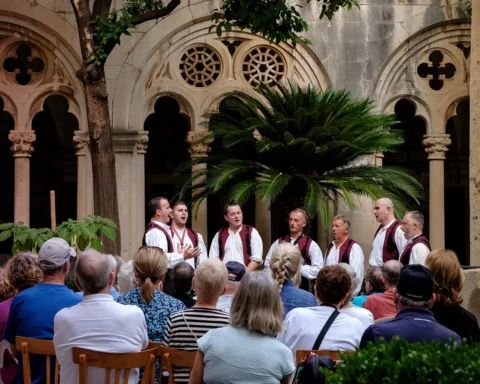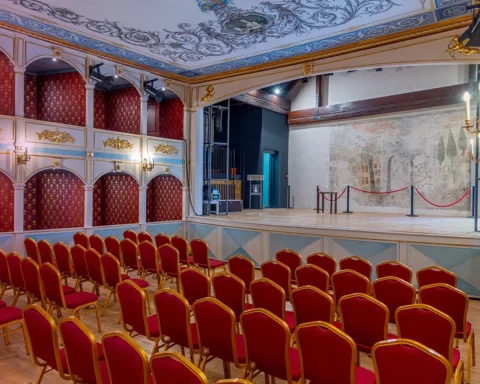The island has been inhabited for thousands of years. However, most archaeological findings come from the times of antiquity (just a fancy name that disguises the ever-present Romans). The island is very small and could never shelter a large number of inhabitants. Who knows, perhaps this is one of the reasons why today we can enjoy its unspoiled natural beauty?
Small as it may be, Zlarin is an idyllic destination that has nothing to do with gold per se, but it is widely speculated that its name might be connected to the natural richness bestowed upon this modest-sized gem.
Golden Island’s treasure – red as blood
When King Polydectes tricked the mythological Perseus into bringing him the head of Medusa, he was sure the young hero would be turned to stone and die. Perseus, however, received help from the goddess Athena and defeated the horrifying Gorgon. The blood from her severed head spilled over the seaweed, turning them into red stone. That’s how coral came to be.
Deriving from Greek, the word “coral” stands for ‘the daughter of the sea.’ Probably this is the most appropriate place to mention that coral is not a plant, as it was believed until the 18th century, but an animal. Oops! Regardless of its biological classification, coral has been known to men as a precious material for over 3000 years. Its connection to Zlarin can be traced back to the 14th century, when the first accounts of brave coral hunters could be found. And courageous they were.
Zlarin is famous for corals that cannot be found anywhere else in the world – their dark pink, scarlet, and bright red shades are unique. And they are not easy to harvest as they can be found some 200 meters below sea level. How did the first coral hunters get there? The truth is – no one knows for sure.
The secret of coral hunting has been passed from the father to the son, and there are no written records. The only sure thing is that they used a tool nicknamed the St Andrew’s Cross – two planks of wood tied together in an X shape and weighted down by a rock. It is suspected that a net attached to such a tool would allow pulling trapped corals up to the surface.
Know the real deal
Being so precious, the temptation to forge real coral beads is just too intense for some to overcome. Therefore, be wary of salesmen who try to sell you the “authentic Zlarin coral” when it does not come with a certificate. In fact, if the coral is truly from Zralin, it will always come with a certificate and an original box. Why?
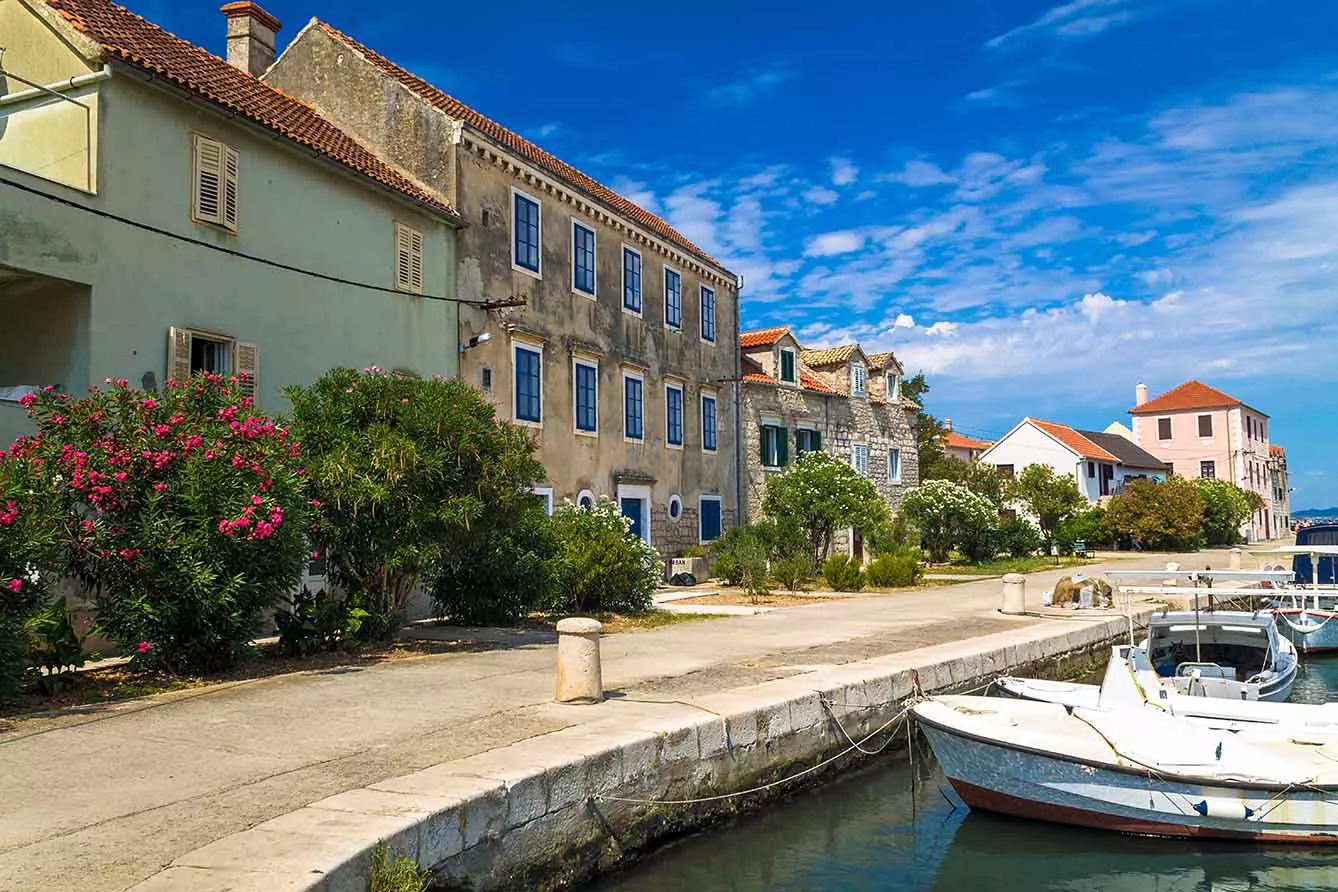
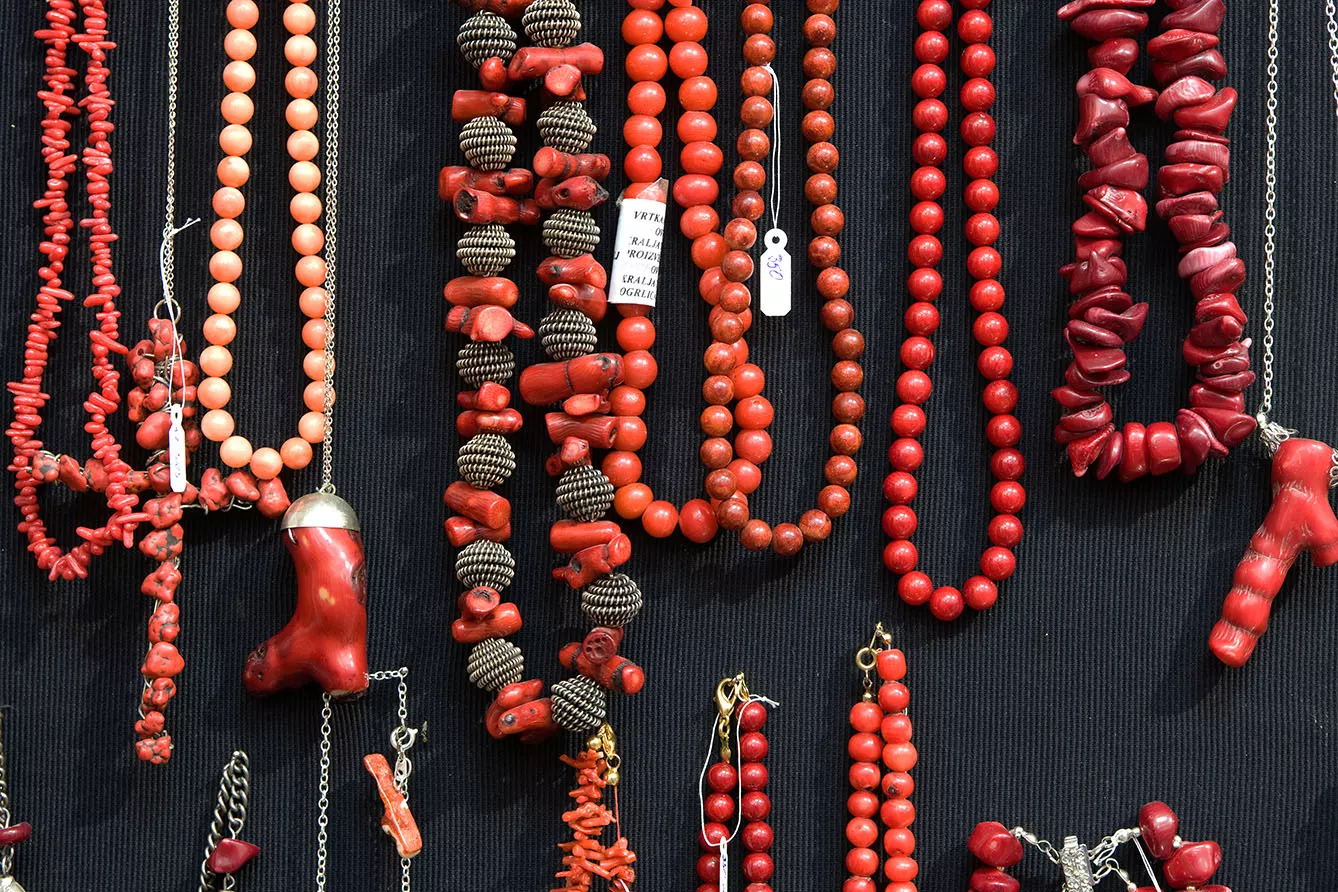
Jewelry from Zlarin is produced using traditional methods. It takes a few days to complete one necklace. The secrets of the best coral spots and manufacturing methods are well guarded and not shared with outsiders. Therefore, for the corals of Zralin to live up to their centuries-old world fame, the manufacturers of the Island certify all of their works to protect their customers from becoming a victim of fraud.
How to tell the coral is real? It is cool to the touch and changes color with rising temperature. An interesting fact is that this quality of coral was used by parents who made coral necklaces for their babies. When they were running a fever, the coral would change color and tell them something was wrong with their child. One other quality of a real coral is that it does not have any smell. Fake corals tend to give an unpleasant scent when rubbed.
Natural scrub-scrub
One last treat for beauty products enthusiasts that can be found on Zlarin is the Adriatic natural sponge. Although it is the Island of Krapanj in the same Šibenik Archipelago, which claims to be the center of the sponge harvesters, Zlarin sponge hunters are the first to be credited with such a profession.
The account comes from 1522 and mentions two men picking sponges for a Šibenik-based vendor who was selling them on to Venice. This unique trade is now unique to the eastern coast of the Adriatic.
Adriatic sponges are considered to be more durable than their ocean cousins. They are also more elastic and kinder to use on the skin. The unique microclimate of the Adriatic gives them a silky feel as it allows for slow growth. As they are naturally rich in germ-obliterating iodine, next time you scrub with your coarse, plastic product, consider switching to Croatian natural sponge richness.
Take a walk on Zlarin (seriously, no cars allowed)
Lastly, in the age of fuel transformation, it simply has to be mentioned that you shall not find any cars on Zlarin island. Actually, in Croatia, there are several islands where you won’t see “an automobile” (such as Silba, Unije, Susak, and Molat). So if you are after some truly fresh sea air and are keen to move your joints, you will not be disappointed. Besides, who would like to rush in such an idyllic, coral-adorned setting?


